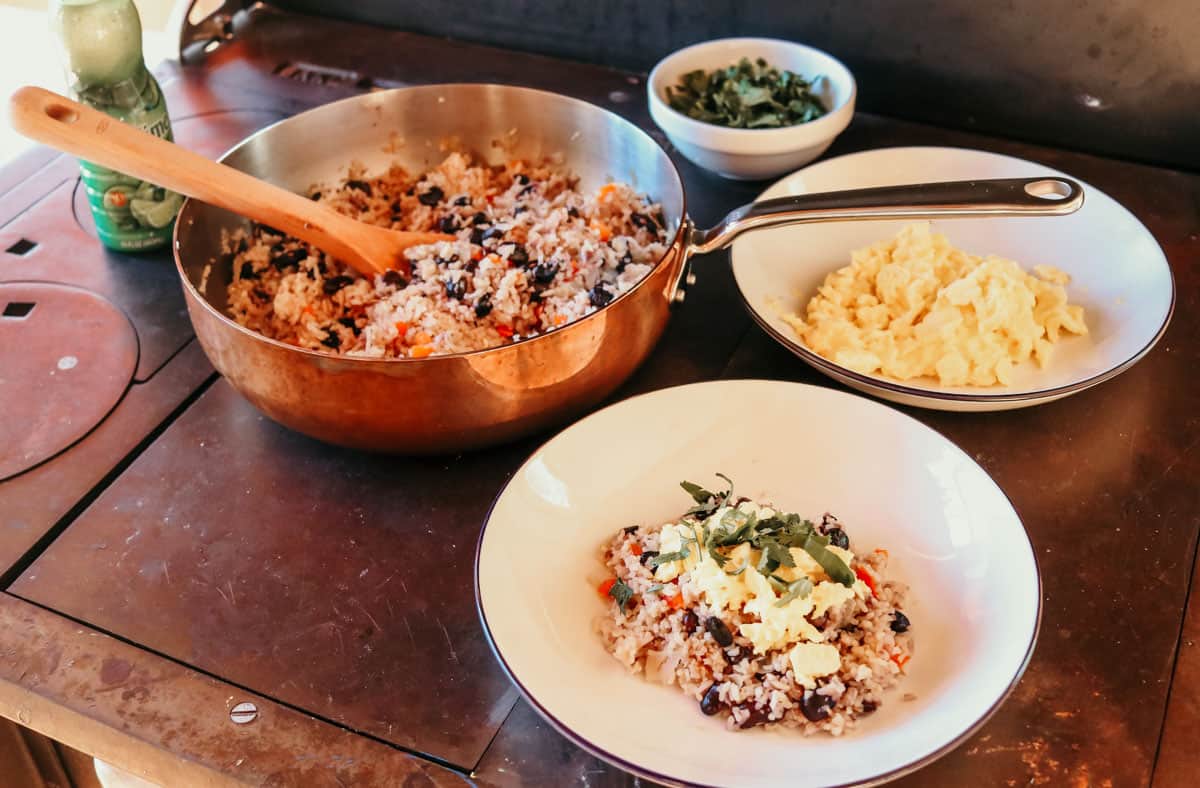
"This is a recipe you see everywhere in Costa Rica. While it's traditionally made with Lizano sauce, a ubiquitous bottled condiment with a uniquely Costa Rican pop, you can also use Worcestershire sauce, which is easier to find up north and just as tasty. The traditional Latin fresh cilantro garnish brings the dish together nicely at the end."
- Chef JJ Johnson
Welcome to our kitchen! We're making Gallo Pinto, a Costa Rican rice and beans dish that touches on human desire with the origin of spices while using the relationship between movement and cognition for teaching time. So hang on to your senses. Now you know what's up.
Learn more about cooking with kids.
If you enjoy this recipe, you won't want to miss Chef JJ's jollof rice, Persian shrimp with rice, rice and peas, Afro-Asian-American gumbo, veggie gumbo, braised oxtail, and Mother Africa sauce as well as roti john, refried beans, aloo chaat and 3 sisters bean stew.
Disclosure of Material Connection: Some of the links in the post are “affiliate links.” This means if you click on the link and purchase the item, I will receive an affiliate commission. Amazon links are not affiliate links. You can read my full affiliate disclosure.
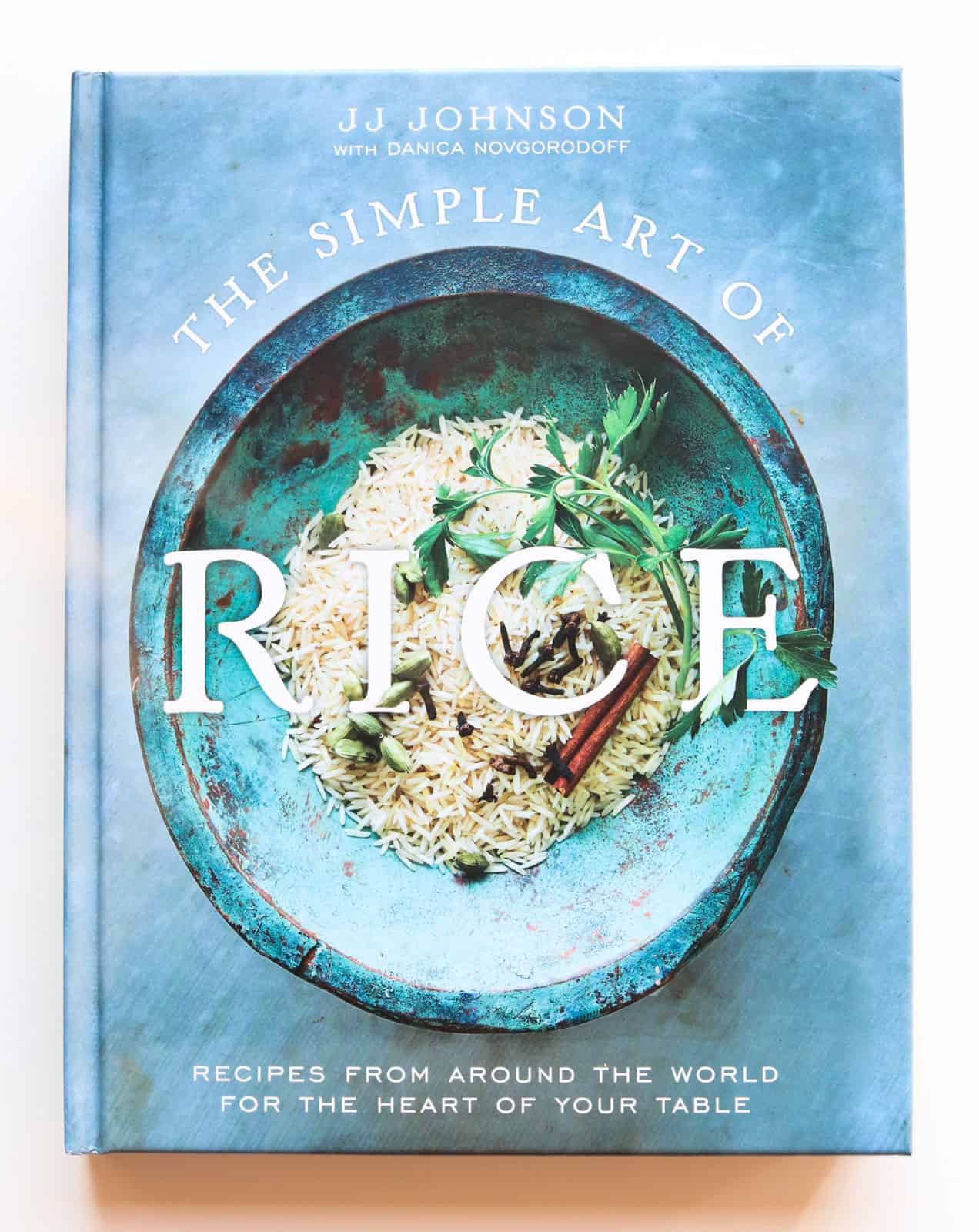
The Simple Art of Rice
This gallo pinto recipe comes from The Simple Art of Rice: Recipes from Around the World for the Heart of Your Table by JJ Johnson with Danica Novgorodoff.
There's so much to appreciate about this cookbook and, in my opinion, that's exactly where its power lies. It's a complete resource, beginning with the basics of rice cookery before comfortably carrying you around the world and through every meal just as you'd expect with the guidance of a personal chef.
No prior knowledge is required in order to get started with The Simple Art of Rice and Danica Novgorodoff's illustrations are enticing to all ages.
No matter the size of your table or the curiosity of your palate, there's a recipe in this cookbook just waiting for you to fall in love with it. It's the complete package.

We first came across JJ Johnson's work in Black Food: Stories, Art, and Recipes from Across the African Diaspora. His recipe for jollof rice with beans was approachable, fun for us to make at home, and delicious.
Since that time, we've followed JJ's work and made many dishes from Between Harlem and Heaven, including a couple of oxtail dishes, Afro-Asian-American gumbo, and an African Mother sauce the kids get excited for.
Chef JJ is a James Beard Award-winning chef and founder of FIELDTRIP where 'Rice is Culture', as well as host of Just Eats on Cleo TV.
Family & Kids' Cooking Resources
Beautiful and diverse cooking resources for you!
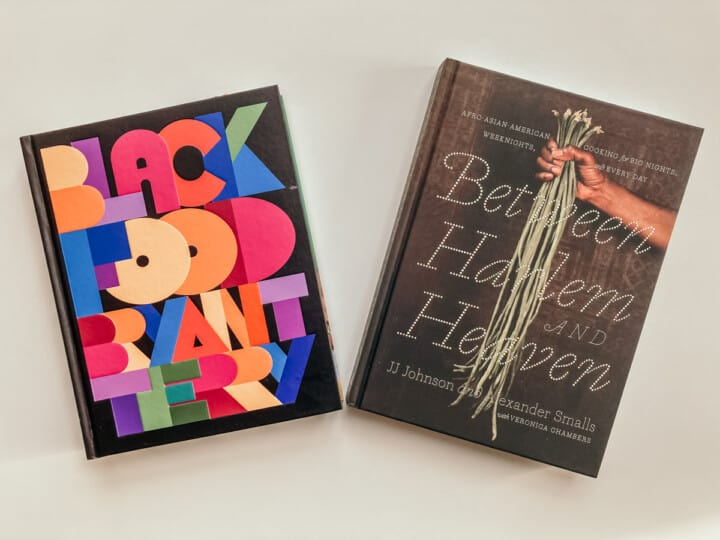
You can also stop by our shop to see more Family & Kids' Cooking Resources.
Learn more about allergies and your family.
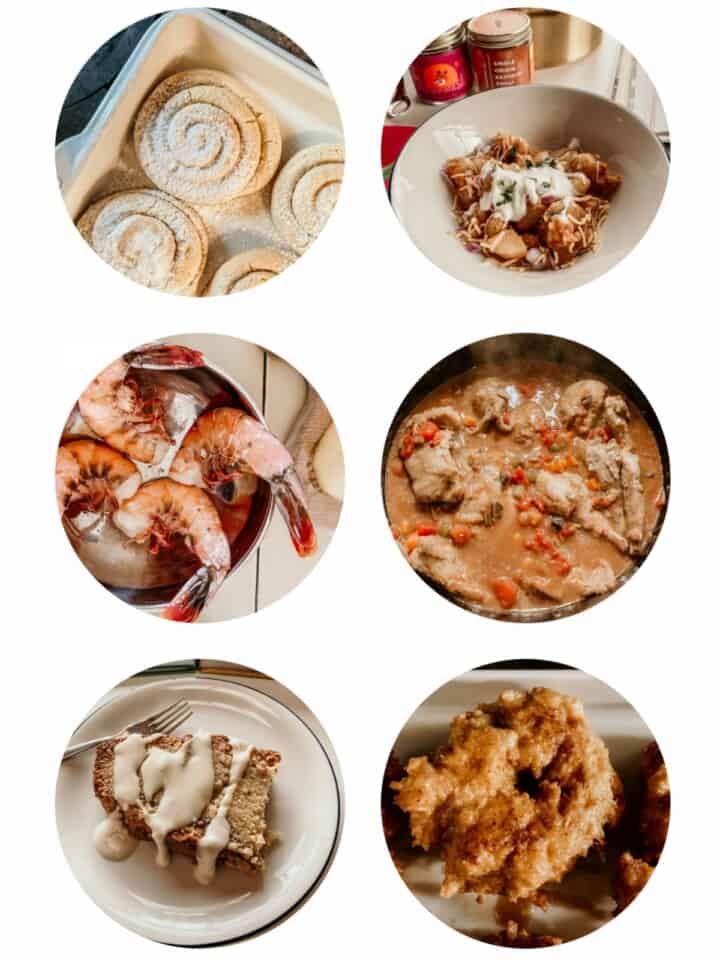
Food from Around the World: Free Cooking Lessons
Learn from some of the most talented chefs around the world!
Free Cooking Course for Families
Discover recipes for every continent! Sign up to receive free cooking lessons for the whole family. Learn from some of the most talented chefs around the world and participate in the quality practical life experiences Montessori education is known for.
Find out more about the cooking course.
Gallo Pinto is a Costa Rican rice and beans dish that is quite popular all over Costa Rica. This gallo pinto recipe boasts big, beautiful Ayocote Negro beans and red bell pepper for a colorful dish that tastes incredible with the fresh cilantro and lime added at the end.
For a complete meal that's also a crowd-pleaser, gallo pinto is served with fried or scrambled eggs on top. However, gallo pinto alone also makes a great side to your favorite fish or chicken dish.
Any long-grain white rice is perfect for this recipe. Chef JJ recommends Carolina Gold, Basmati, or Jasmine for the best gallo pinto.
Anson Mills also has a Laurel-Aged Charleston Gold rice that I recommend trying.
"A love child of our famed Carolina Gold Rice and a lost rice called Charleston Long Gold, this elegant and perfumed long-grain rice has been stored with wild red bay laurel leaves for three years of seasonal heat and chill. Laurel-Aged Charleston Gold Rice possesses rare and assertive grain-for-grain characteristics and lovely aromatics similar to the famous aged basmati rices of India."
- Anson Mills
We like using these big, beautiful Ayocote Negro beans for a hearty gallo pinto, but any black beans will work.
"Produced in Mexico, this thick-skinned bean is big and beautiful. Not your average black bean. It's a firm bean but goes from dense to creamy with continued cooking.
Ayocote Negro are firm without being starchy, and have a darker, inky bean broth than other runner beans enjoy. They are large, bold and one of the first beans we recommend if you're trying to sell a "steak and potatoes"-type on heirloom beans.
Originally from Oaxaca, Mexico, the Ayocote family was one of the first cultivated crops of the Americas. They are grown all over central and northern Mexico. If you plant them, you can enjoy the flowers, eat the pods as a broad bean, or shell them fresh for shelling beans.
Please note that this is not a traditional black turtle bean. When cooked, it's very similar to the Ayocote Morado or even Scarlet Runner. For a traditional turtle bean, we suggest our Midnight Black bean."
- Rancho Gordo
This dish is an excellent choice any night of the week. Add this as a main with fried or scrambled eggs on top, or as a side to your favorite fish or chicken dish when meal planning.
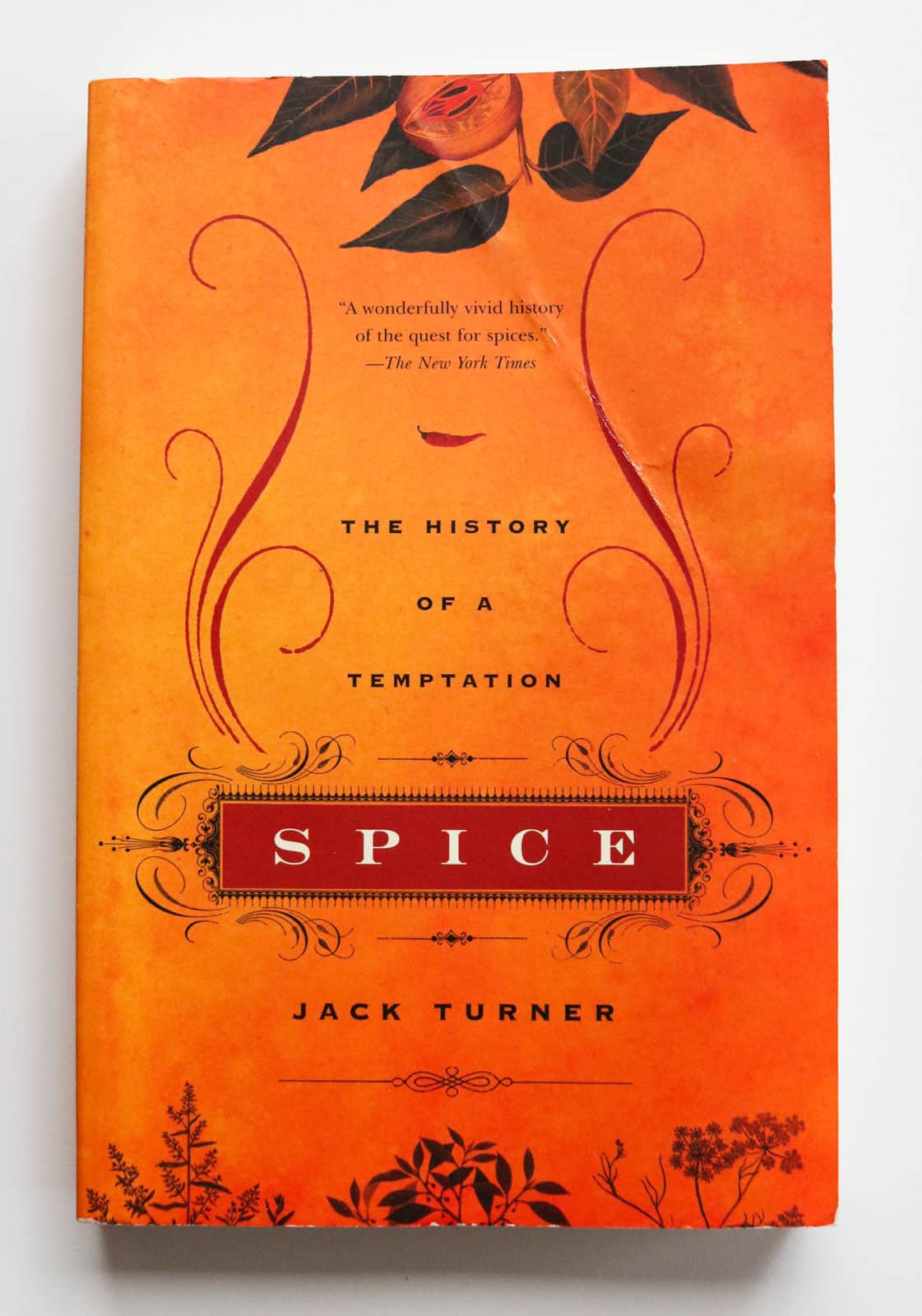
Interested in Exploring the Origin of Spices?
We're having a lot of fun with cumin and black pepper while making this dish and we love opportunities to extend the learning. If you're enjoying the sensorial experiences and are interested in spices, Spice: The History of a Temptation talks about spice history from ancient times through the Renaissance.
Explore the influence of spices on our desire as humans and their many important uses related to the palate, the body, and the spirit.
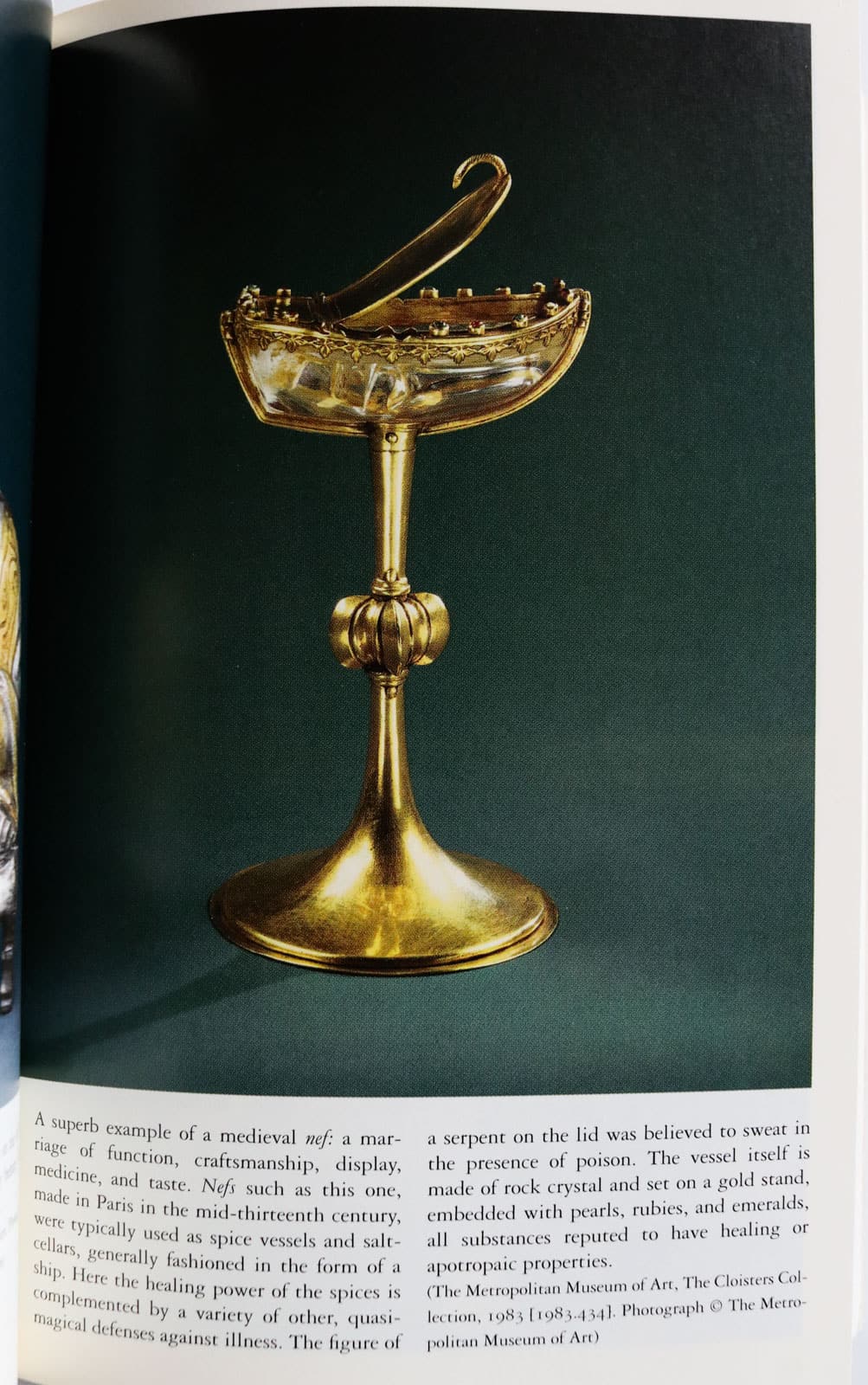
Spice vessels, spice boxes, and pepper pots are a few of the cool artifacts you'll find in this book exploring the origin of spices.
Did you know that Ancient Egyptians may have spiced their mummies?
Also, check out Atlas Obscura's Spice School: The Foundations of Flavor with Claire Cheney of Curio Spice Co. for an on-demand look at the history of spices, your brain on spices, and how to layer flavor.

Teaching Time While Cooking?
If you're spending any time in the kitchen with kids, you're likely talking about time. Take advantage of the relationship between movement and cognition and teach time using a hands-on approach with a Montessori clock.
Kids can use the screwdriver and screws to add the hour and minute hands to the clock, like a real clockmaker or inventor, while working on fine-motor skills.
The blue five beads are used to count by 5's as kids learn how to count the minutes in an hour. They are placed in the groove surrounding the clock as you give the lesson and then while kids are practicing afterward.
Once kids are able to tell time using this teaching clock, the labels provide common terminology related to telling time such as quarter to, ten past, etc.
The removable red fraction insets are helpful for exploring fractions of time or fractions in general, such as quarter, half, whole, etc.
The whiteboard at the top can be used to transcribe the time in a digital format.

We keep our math materials on a shelf for easy access. While homeschooling preschool through elementary learners, I've found it's easier to keep the earlier math materials on the lowest shelves.
There are some exceptions. Some materials are useful for several years, which is awesome, and so we do the best we can when arranging and rotating items.
Time is a skill kids can begin learning in the preschool & kindergarten (primary) years and so this Montessori clock by Mirus Toys is accessible to all learners.

How to Make Gallo Pinto
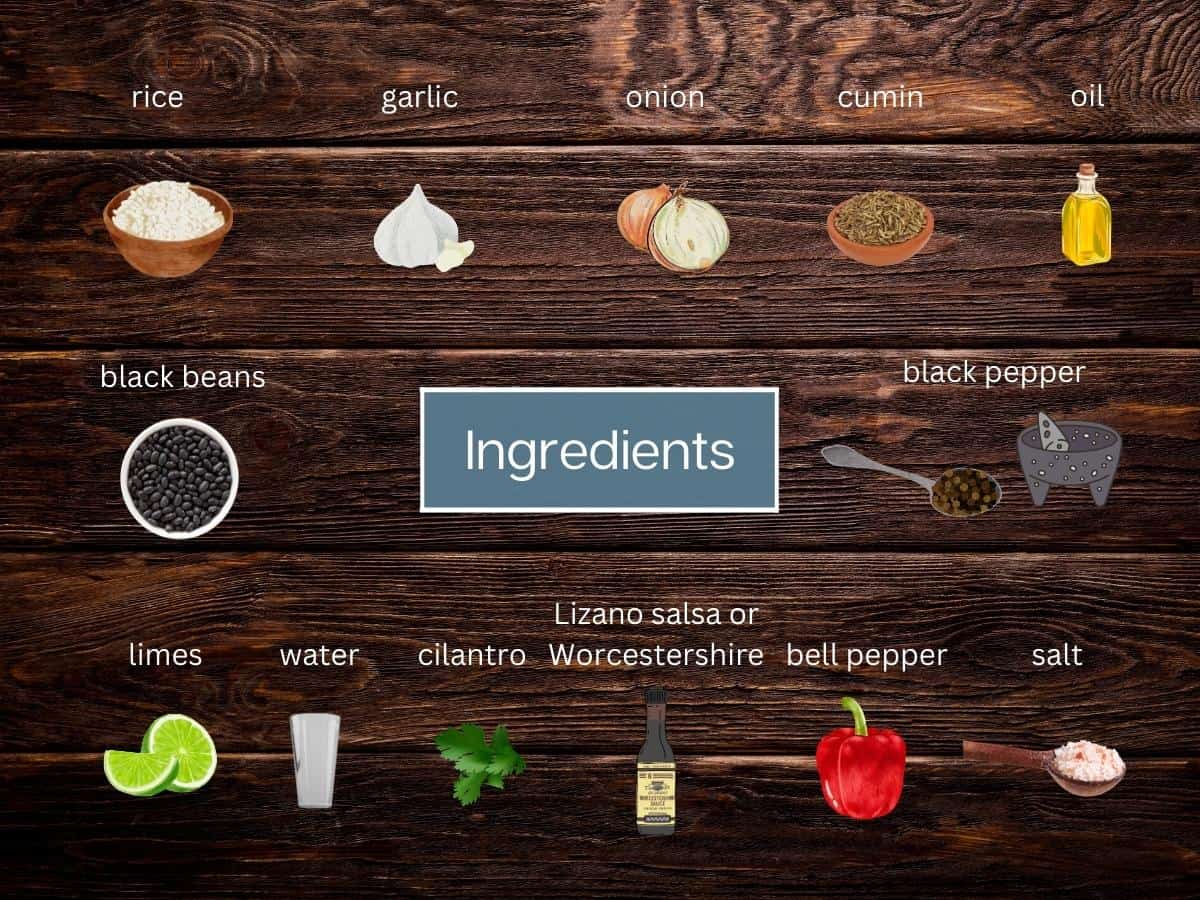
Gallo Pinto Ingredients
- oil - any vegetable oil will work. We like avocado oil for this dish
- bell pepper - red bell pepper makes for a delicious gallo pinto with a beautiful pop of color
- onion - grab a yellow onion for the best gallo pinto
- garlic
- rice - we chose Carolina Gold rice on this day but any long-grain white rice will work nicely
- salt - Diaspora Co. has Surya Salt that you can pre-order with a Salt Tiger, if your kids are into it
- cumin - this Jodhana Cumin from Diaspora Co. smells amazing and adds something special to this pinto gallo.
- pepper - we like this Single Origin Aranya Black Pepper from Diaspora Co. You can use a pepper mill or a molcajete to grind the black pepper. The molcajete is fun for kids and an excellent way to develop hand muscles.
- black beans - Ayocote Negro beans are perfect for this recipe but any dried or canned black beans will work
- Lizano salsa - you can also use Worcestershire sauce for this recipe
- water
- cilantro - fresh cilantro makes all the difference but use what you have on hand
- limes - don't skip the lime. You can also use lime juice

Equipment
- Apron
- Prep Bowls
- Butcher Block
- Child-Friendly Knife
- Utility Knife - Kaia has said goodbye to the nylon child-friendly knife and is excited to be working with this utility knife. She's excited to use this for a bit before transitioning to a small knife set
- Santoku Knife
- Kitchen Scale
- Jar with Lid
- Fine-Mesh Strainer
- Measuring Spoons
- Measuring Cup
- Molcajete with Tejolote - this mortar and pestle is made from volcanic rock using ancestral techniques and it's a blast for kids and adults to play with
- Wooden Spoon
- Saucier or medium saucepan - Rice grows in size when you cook it, so make sure you're cooking it in a large enough pan
- Learning Tower as needed

1. Soak the Beans
Wash your hands with soap and water.
Use a kitchen scale to weigh the beans needed for this Cuban black beans and rice. Place the beans in a mason jar or bowl and add enough water to cover the beans. Next, add 1 teaspoon of salt and stir.
Soak the beans for 2-6 hours. We soak these large Ayocote Negro beans for 6 hours. Check periodically to make sure all of the beans are submerged. Add additional water as needed.
If you're working with canned black beans, you can skip this step.
Learn more about soaking beans and some math to keep in mind based on the beans you're working with.

2. Prep the Pepper, Onion, Garlic, and Cilantro
Wash your hands. Chop the bell pepper, onion, garlic, and cilantro using a child-friendly knife and cutting board.
Kaia has transitioned to a utility knife and she's enjoying the thrill of a more powerful knife for prep work.
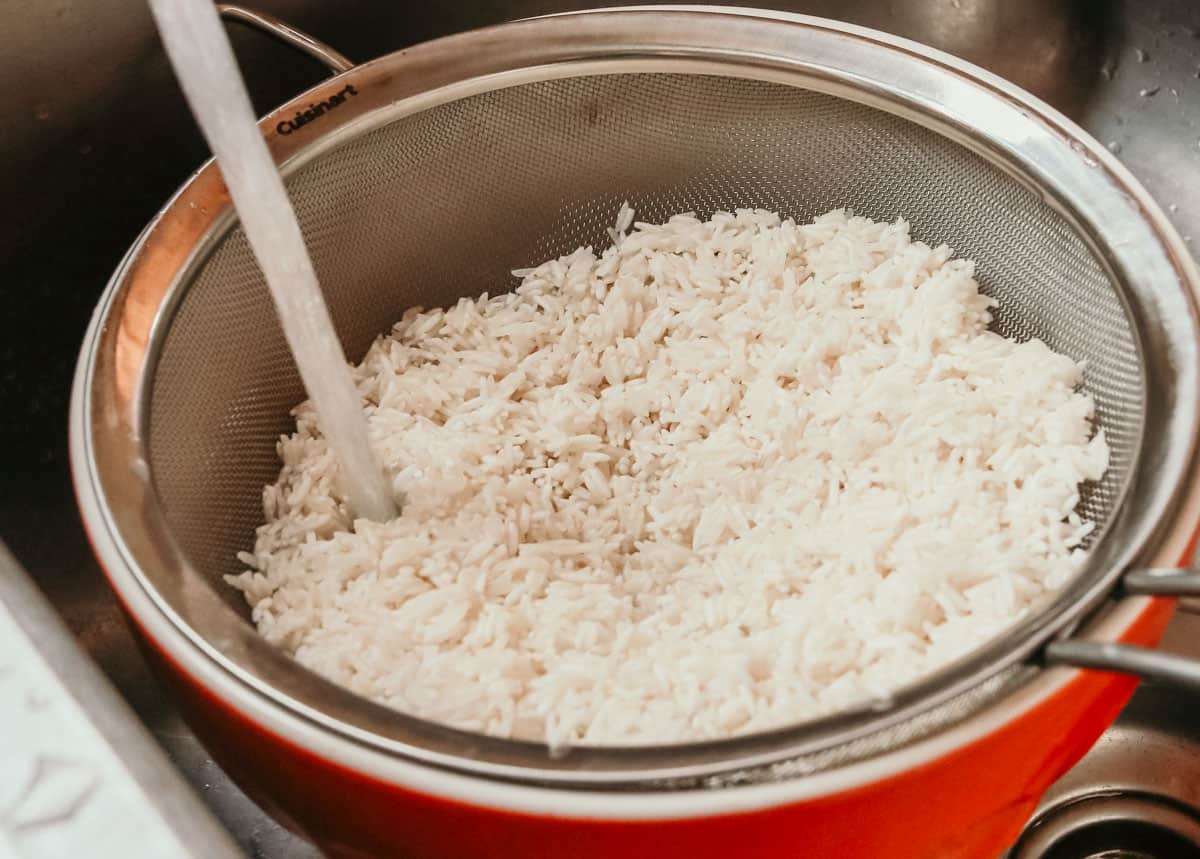
3. Wash the Rice
At the sink, place a fine-mesh strainer over a bowl. Add the rice to the strainer. Turn the water on. Let the bowl and strainer fill with cool water. Turn off the water and use your hand to stir the rice around. The water will become cloudy. Pick up the strainer and empty the bowl.
Continue the process of filling the bowl and stirring the rice until the water is no longer cloudy. The number of times depends on the rice.
When finished, pick up the strainer and shake off any excess water. Set the rice aside.

4. Add the Oil, Bell Pepper, Onion, & Garlic to the Pan
Turn the stove on medium heat. Use a measuring spoon to measure the oil needed for the recipe. Add the oil to the pan.
Add the chopped bell pepper and onion to the pan. Sauté for about 4 minutes or until softened.
Add the garlic and cook for one more minute.

5. Add the Rice, Salt, Cumin, and Pepper
Add the washed rice to the pan. Use a measuring spoon to add the salt, cumin, and pepper to the pan.
These adorable spice spoons are fun for kids. You can use a pepper mill or molcajete and tejolote, or mortar and pestle, to grind the spices as needed.
Give everything a stir to coat the rice.
Not sure about washing rice? Get a free rice-washing tutorial with pics.
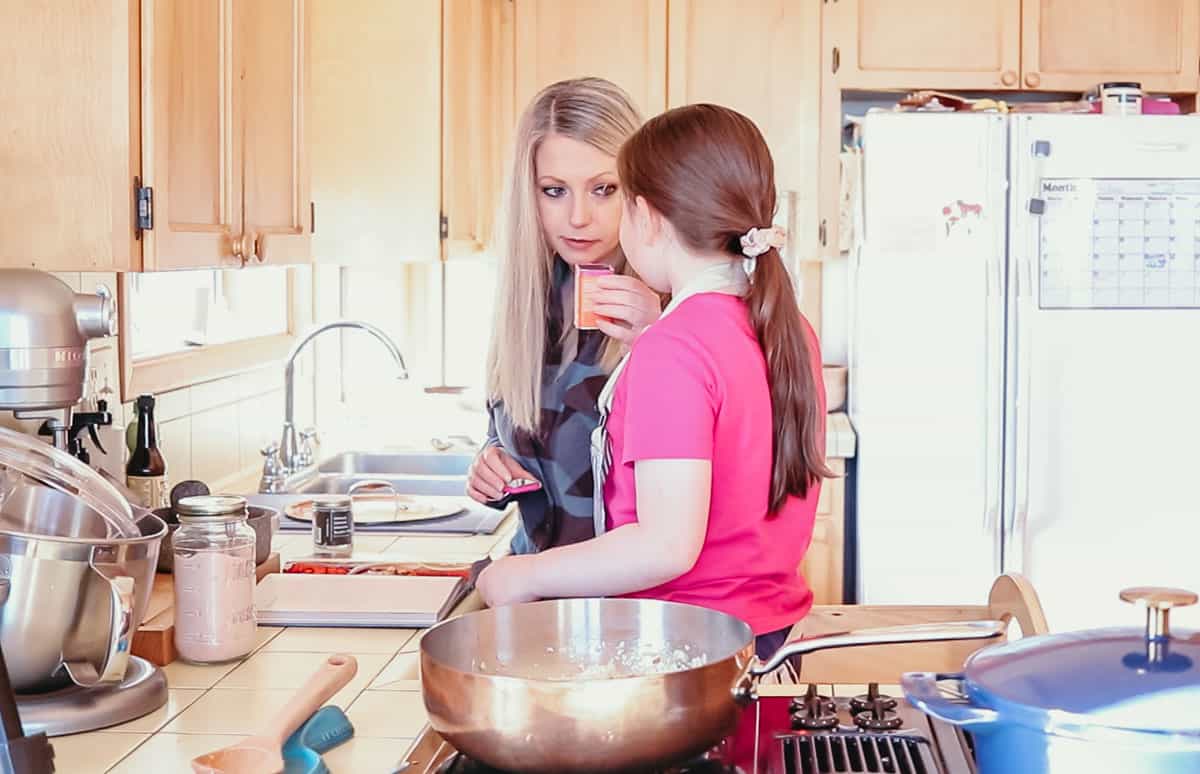
Take advantage of the opportunity to smell, touch, and taste the spices you're working with.
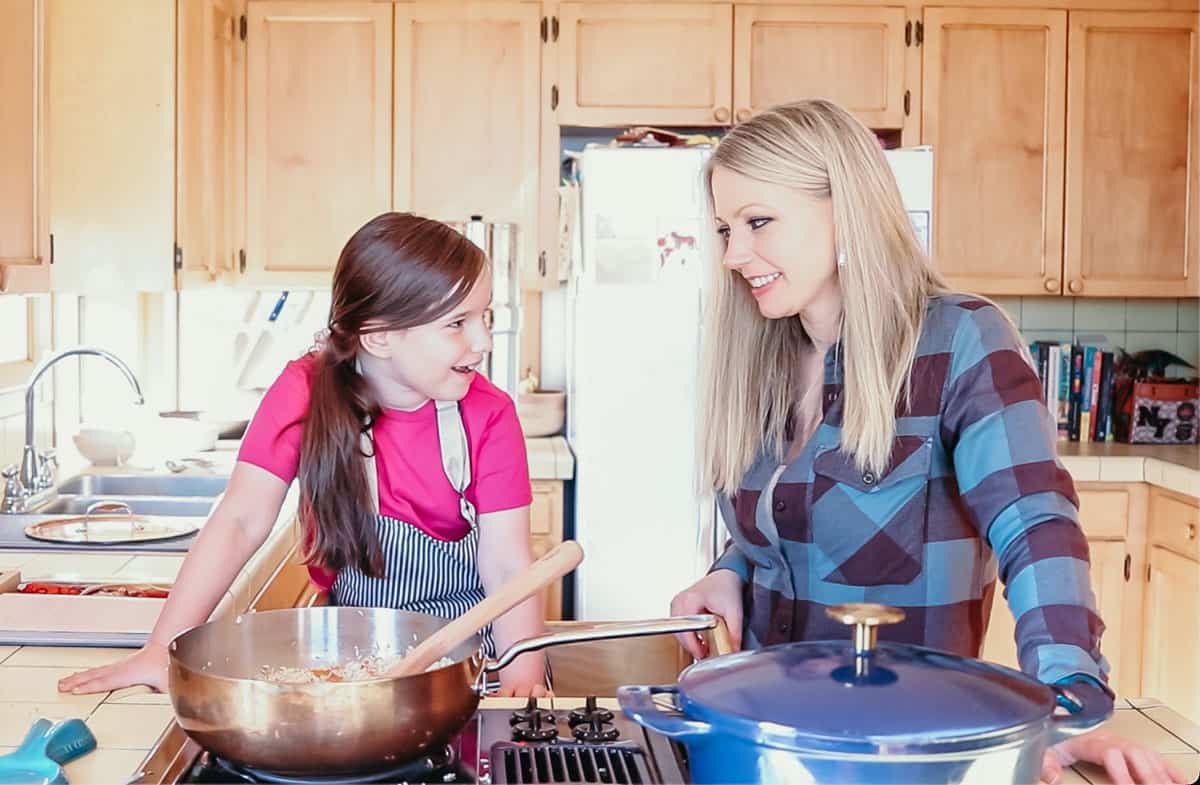
Cook the rice for 3 to 4 minutes, or until it turns golden.

6. Add the Beans, Salsa (or Worcestershire), & Water
Once the rice is golden, add the drained black beans to the pan. Use a measuring cup to measure and pour the Lizano salsa, or Worcestershire sauce, and water into the pan.

7. Give it a Good Stir and Bring to a Boil
Give it a stir and turn the heat up. Bring the gallo pinto to a boil. Turn the heat down to low, cover the pan, and let it simmer for 25 minutes.
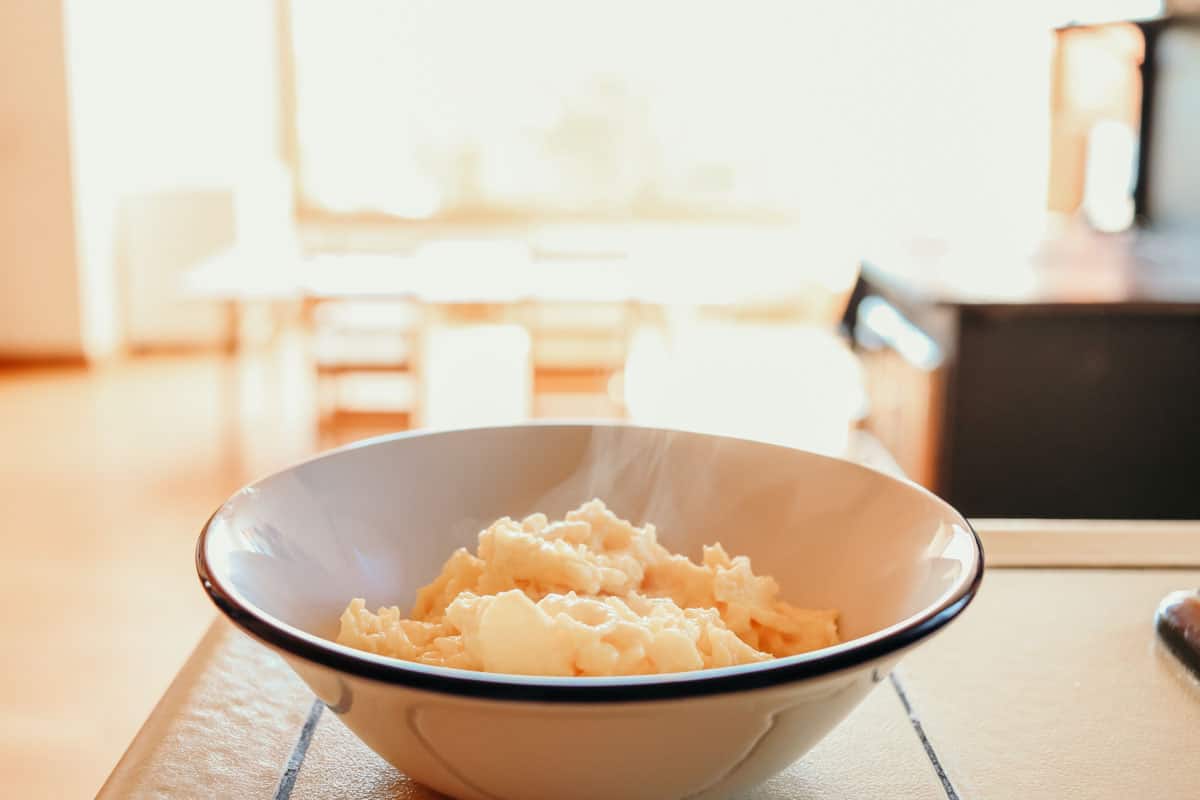
8. Make the Eggs While the Gallo Pinto Simmers
You can use the time the gallo pinto is simmering to make the eggs if you'd like to serve fried or scrambled eggs on top.
Turn off the stove when finished.
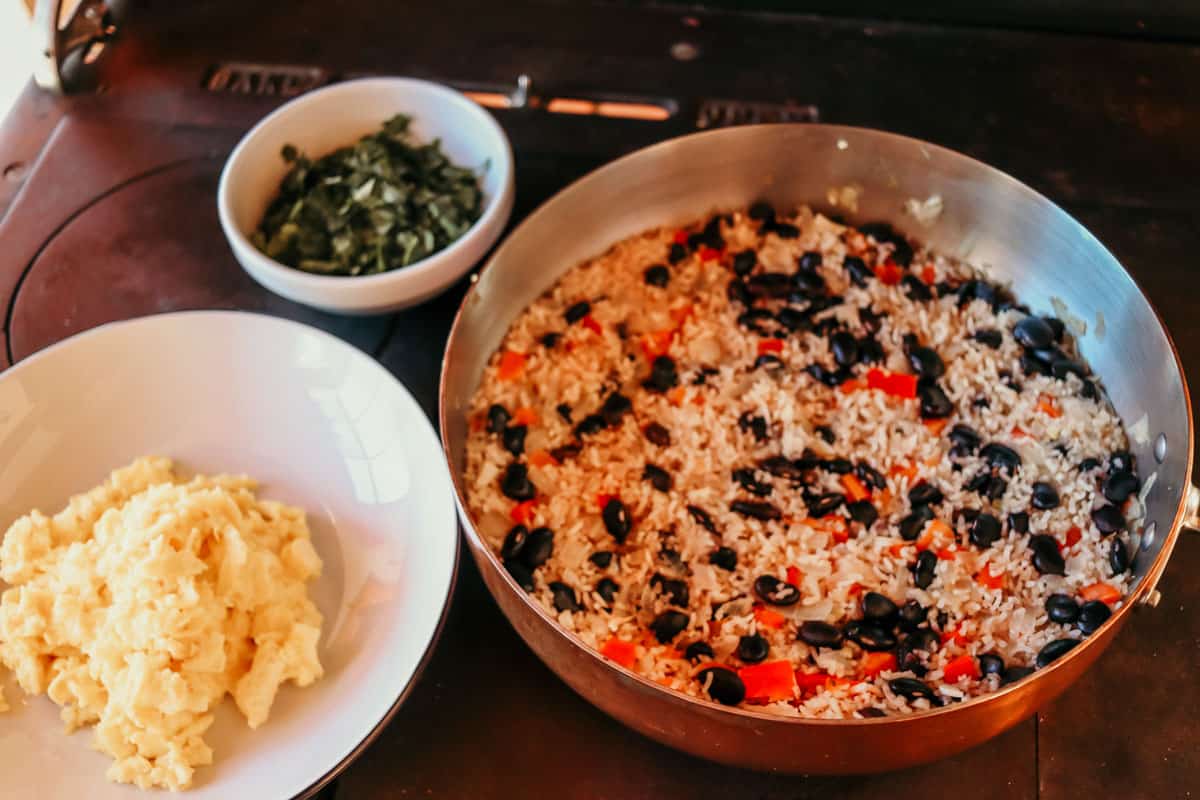
9. Serve Gallo Pinto With Eggs, Cilantro, & Lime Juice
When the rice and beans are fully cooked, remove from heat and turn off the stove. Let the rice steam while covered for 10 minutes.
Serve gallo pinto with scrambled eggs, cilantro, and lime juice for a complete meal, or skip the eggs if you want a side for your favorite chicken or fish dish.



You can turn up the heat with the addition of your favorite hot sauce.
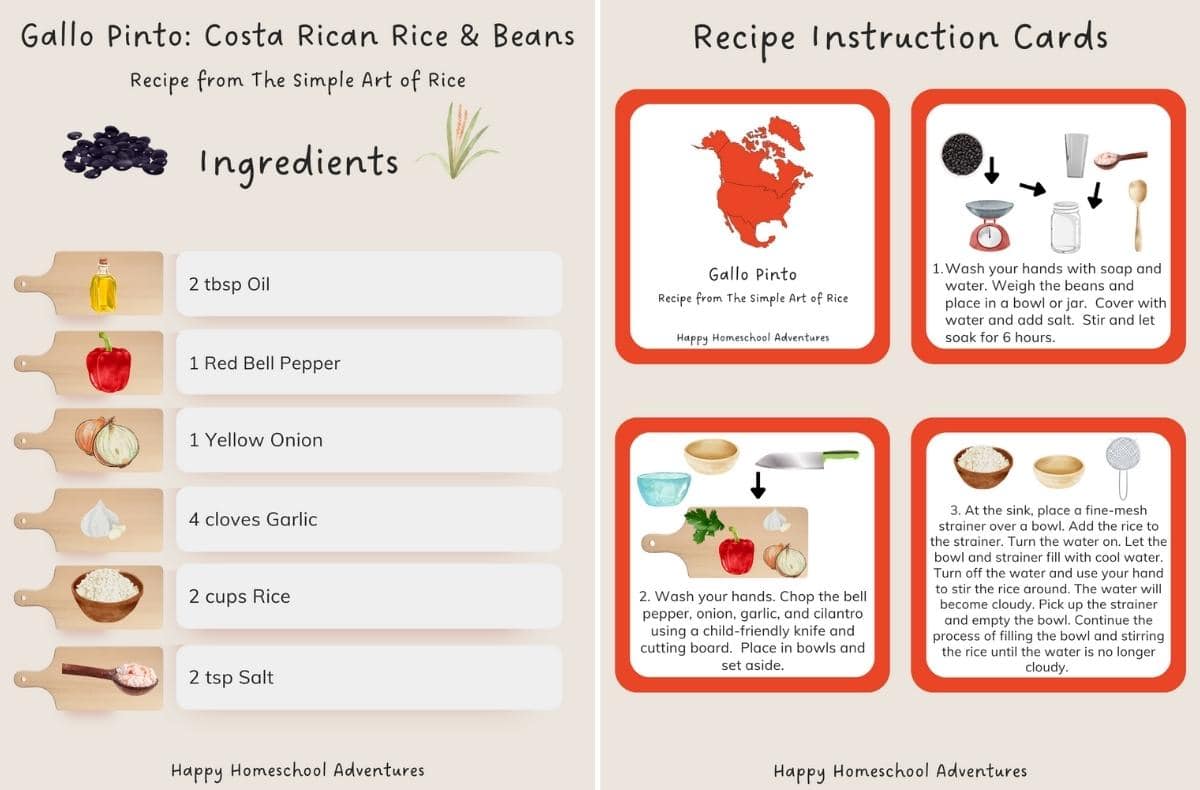
Free Gallo Pinto Recipe for Pre-Readers and Up
Grab your free printable recipe cards above. Kids can gather ingredients using the ingredient list, gather their equipment with the tools list, and prepare the meal using the step-by-step recipe cards, with assistance as needed.
The cards are easy to use, include pictures, and encourage confidence and independence in the kitchen. They also make an excellent addition to your Montessori continent box for North America.
Montessori Continent Boxes
Explore every continent with these solid maple hardwood boxes.
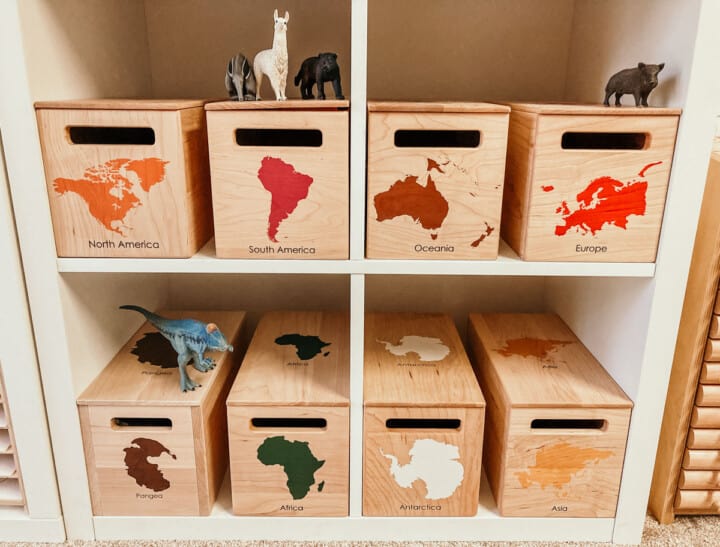

Free Scrambled Eggs Recipe for Gallo Pinto
Grab your free printable recipe for making scrambled eggs. For a complete meal, serve the scrambled eggs on top of the gallo pinto. Then add the cilantro and lime juice for the win.

Gallo Pinto
Equipment
- Jar with Lid
- Learning Tower as needed
Ingredients
- 2 tablespoon avocado oil
- 1 red bell pepper
- 1 yellow onion medium
- 4 cloves garlic
- 2 cups Carolina Gold rice or any long-grain white rice
- 2 teaspoon kosher salt preferably Diamond Crystal
- 1 teaspoon ground cumin
- ½ teaspoon black pepper
- 1 cup black beans dried or 2 15-ounce cans drained
- ¼ cup Lizano salsa or Worcestershire sauce
- 3 cups water
- ½ bunch fresh cilantro stems removed, leaves chopped
- 2 limes or 2 tablespoon lime juice
Instructions
- Soak the beans: Wash your hands with soap and water. Use a kitchen scale to weigh the beans needed for this Cuban black beans and rice. Place the beans in a mason jar or bowl and add enough water to cover the beans. Next, add 1 teaspoon of salt and stir. Soak the beans for 2-6 hours. We soak these large Ayocote Negro beans for 6 hours. Check periodically to make sure all of the beans are submerged. Add additional water as needed. If you're working with canned black beans, you can skip this step.
- Prep the ingredients: Wash your hands. Chop the bell pepper, onion, garlic, and cilantro using a child-friendly knife and cutting board.
- Wash the rice: At the sink, place a fine-mesh strainer over a bowl. Add the rice to the strainer. Turn the water on. Let the bowl and strainer fill with cool water. Turn off the water and use your hand to stir the rice around. The water will become cloudy. Pick up the strainer and empty the bowl. Continue the process of filling the bowl and stirring the rice until the water is no longer cloudy. The number of times depends on the rice. When finished, pick up the strainer and shake off any excess water. Set the rice aside.
- Turn the stove on medium heat. Use a measuring spoon to measure the oil needed for the recipe. Add the oil to the pan. Add the chopped bell pepper and onion to the pan. Sauté for about 4 minutes or until softened. Add the garlic and cook for one more minute.
- Add the washed rice to the pan. Use a measuring spoon to add the salt, cumin, and pepper to the pan. You can use a pepper mill or molcajete and tejolote or mortar and pestle to grind the pepper as needed. Give everything a stir to coat the rice. Cook the rice for 3 to 4 minutes, or until it turns golden.
- Once the rice is golden, add the drained black beans to the pan. Use a measuring cup to measure and pour the Lizano salsa (or Worcestershire sauce) and water into the pan.
- Give it a stir and turn the heat up. Bring the gallo pinto to a boil. Turn the heat down to low, cover the pan, and let it simmer for 25 minutes.
- You can use the time the gallo pinto is simmering to make the eggs if you'd like to serve fried or scrambled eggs on top. Turn off the stove when finished.
- When the rice and beans are fully cooked, remove from heat and turn off the stove. Let the rice steam while covered for 10 minutes. Serve gallo pinto with scrambled eggs, cilantro, and lime juice for a complete meal, or skip the eggs if you want a side for your favorite chicken or fish dish. You can turn up the heat with the addition of your favorite hot sauce.
Notes
- Don't leave food sitting out at room temperature for extended periods
- Never leave cooking food unattended
- Use oils with high smoking point to avoid harmful compounds
- Always have good ventilation when using a gas stove
- See more guidelines at USDA.gov.
- Full Lesson Info and Pictures at: https://happyhomeschooladventures.com/gallo-pinto
Nutrition
Estimated nutrition information is provided as a courtesy and is not guaranteed.






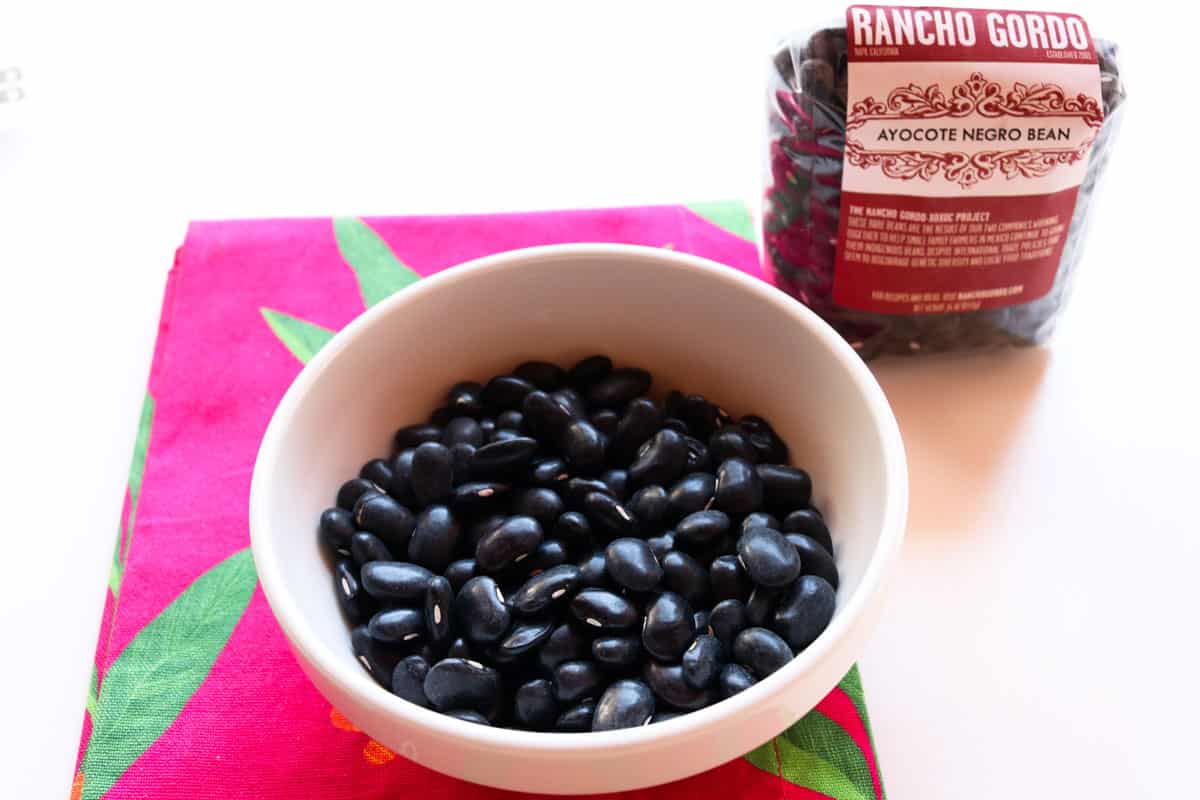
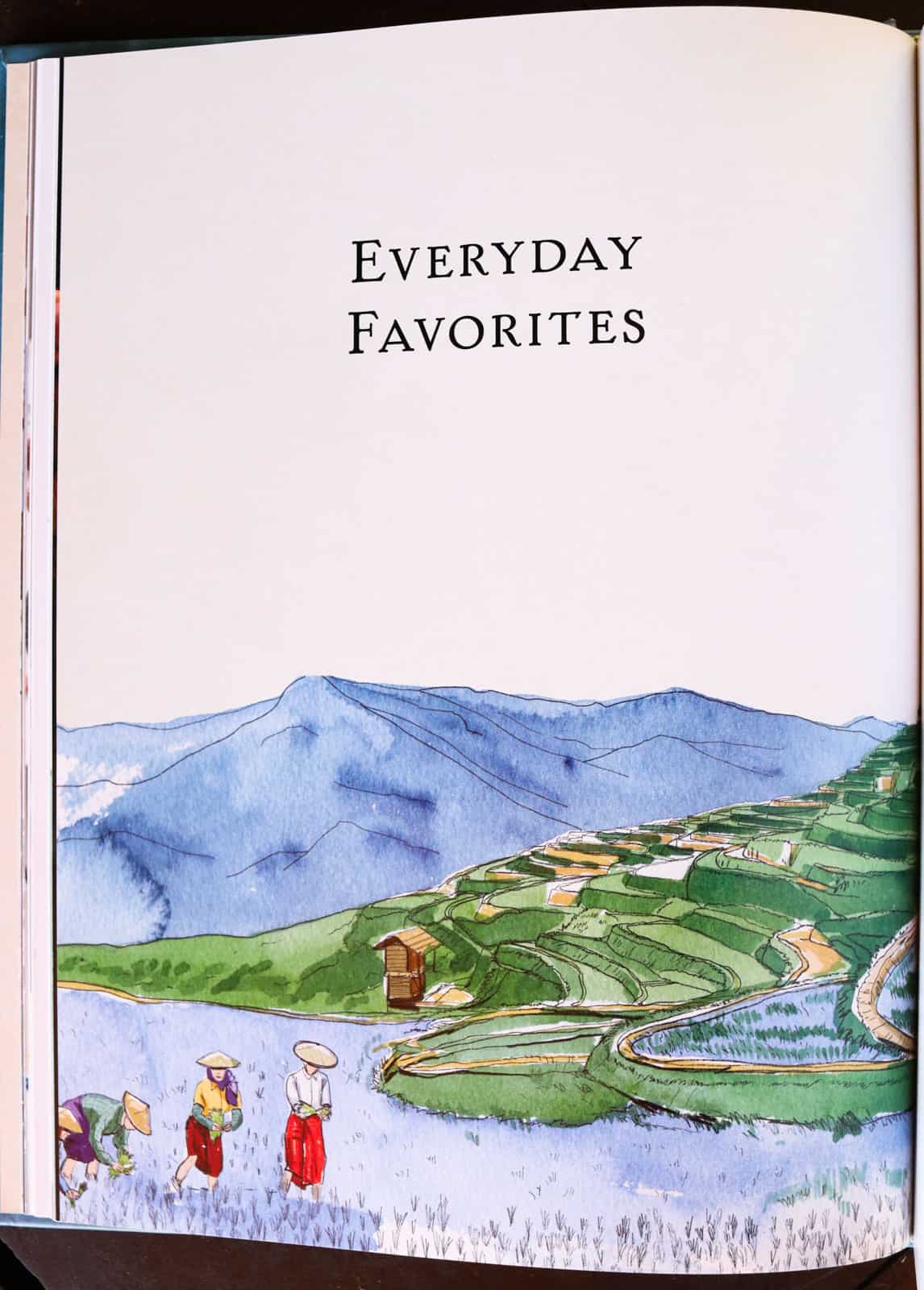

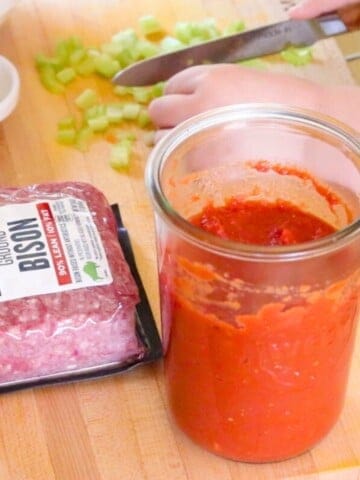
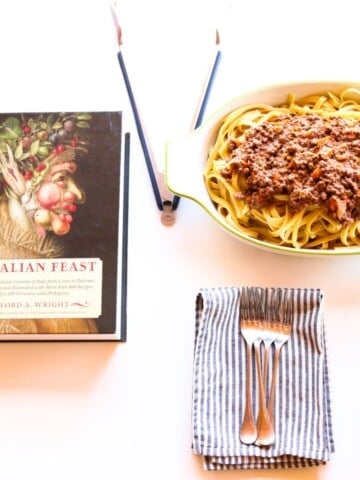

Leave a Reply